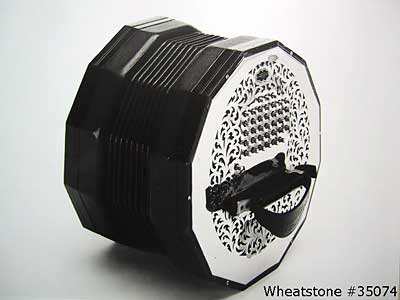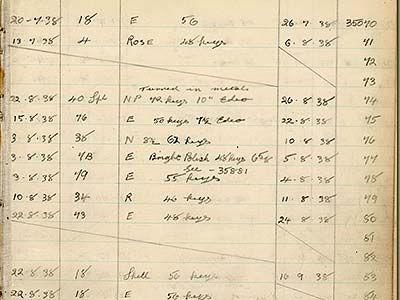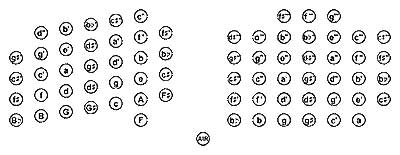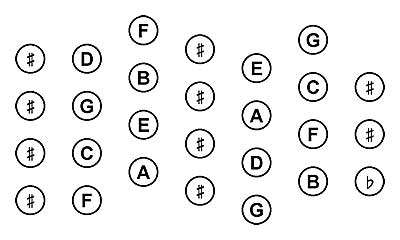A Wheatstone Twelve-Sided ‘Edeophone’ Concertina
|
|
|
|
|
Posted 15 November 2001 A Wheatstone Twelve-Sided ‘Edeophone’ Concertina
|
| Period |
Average Instruments Per Year |
| mid-1910 through 1919 | 345 |
| 1920 through 1929 | 400 |
| 1930 through 1939 | 412 |
| 1940 through 1949 | 221 |
| 1950 through 1959 | 638 |
| 1960 through 1969 | 126 |
| 1970 through 1974 | 33 |
In December 1975, the remaining plant machinery, material stocks, and trading name were sold off to Steve Dickinson, who reconstituted the independent C. Wheatstone & Co. and resumed manufacturing traditional concertinas of high quality.
Description of Wheatstone Concertina #35074
The unusual Wheatstone #35074 was received from the seller within an apparently original square, hide case labeled with Wheatstone & Co.’s address in West Street (as current from 1897). Figure 1 is a photograph showing the right side of the concertina.
The instrument is a large twelve-sided concertina, ten inches (25.4 cm) in diameter, with raised nickel-plated metal ends having Wheatstone-pattern fretwork with red muslin ("gauze") lining.
Labels on both ends are the typical two-rivet, scalloped-edge metal badges seen on Wheatstone instruments of the period. That on the right-hand end is embossed "Manufacturers C. Wheatstone & Co. London." That on the left-hand end is embossed "Wheatstone" above and "Made in England" below a rectangular serial number cartouche, in which is stamped "35074." The inset areas into which these scalloped end-labels were riveted show no trace of any alteration of a previous Lachenal-style label cartouche, nor any welding-in of a new label recess area.
The end-plates are German silver (an alloy of copper, nickel, and zinc) set into the black-stained wooden end-frames, and show areas of severe palm-wear, revealing two levels of nickel plating beneath the final plating which is of polished nickel. Similar wear is visible where fingernails would strike near almost all of the finger studs, all of which demonstrates that the instrument was played seriously for some period of time. The six screws per end (located in alternate edges) have gently-domed heads with a flattish level of countersinking.
The eight-fold leather bellows are of rough-grained black leather, in excellent condition. The instrument retains well-used original thick-hide leather hand-straps, deeply stamped with "C. Wheatstone & Co. Manufacturers London," and still with some original gilding to the lettering. The straps are secured to the hand-bars with two screws through rectangular blocks of pearl, and each has the usual nickel Wheatstone adjustment buckle to the lower end of the hand-bar.
The inner face of each action board is stamped with an inked rubber-stamp mark "Wheatstone 35074," and both the top-most inner face of each end’s bellows frame and the top-most outer reed chambers of each reed-pan are stamped with an inked and impressed mark "74." It was standard Wheatstone practice to so mark the parts of each concertina with the final two digits of the instrument’s serial number. The center hole of each reed-pan is markedly offset from center, and the larger, deeper reeds on the inner faces of the reed pans are noticeably inset toward the center of their pan.
Wheatstone & Co. ‘Edeophones’
Comments about this instrument made in internet discussion groups at the time of its sale proposed three opinions about how such a "Wheatstone Edeophone" might have come to exist: (1) that the instrument may have been completed at Lachenal’s before it went out of business, then "re-badged" with Wheatstone labels for sale; (2) that the instrument had been made by Lachenal but later rebuilt by Wheatstone with ends altered to include Wheatstone labels; and (3) that the instrument was made by Wheatstone, but from Lachenal parts acquired at the final sale. All these comments assumed that the instrument or its major parts had been in those barrows that Tommy Williams so picturesquely recalled as having been taken around to Wheatstone’s.
Yet all these theories were proved to be untrue when Steve Dickinson carried out a detailed examination of the instrument at the workshops of the current C. Wheatstone & Co. Mr. Dickinson still has concertina-making tools, jigs, and machinery from the Wheatstone workshops of the middle and late 1930s (and earlier) which he acquired with the company. His knowledge of these, gained in part in the 1970s from Sid Watkins, the last surviving Wheatstone craftsman from the pre-war period, indicates that the entire instrument was made within the Wheatstone workshops.
The historic Wheatstone jigs still in use enable six-, eight- (Æola), and twelve-sided (Edeophone) concertina ends and action boards to be constructed on a single set of tools. The action board and reed-pan routing tools have three clearly-numbered settings on the jig, for six-, eight-, and twelve-sided instruments. Moreover, an examination of the reed-frame fly-press tools used for 1930s Wheatstone reeds shows that they were the same tools used to make the reeds for Wheatstone #35074.
Mr. Dickinson further observes that (1) the inked rubber-stamped "Wheatstone 35074" on the action-boards was created with a rubber stamp still in his workshop equipment collection; (2) the grainy leather bellows are undoubtedly Wheatstone, being of the poor quality that the firm was limited to in the late 1930s; (3) the inset metal ends are turned over and screwed under the rim of the end-frames, exactly as in standard Wheatstone practice; and (4) the red muslin lining is not only of Wheatstone origin, but original stocks of it are still available for current production. 9
Information from the Concertina Production Ledgers
To confirm the date of manufacture, we consulted the concertina production ledgers from the old Wheatstone & Co., these now preserved at the Horniman Museum. 10
The entry for this instrument is shown in Figure 2. It reads:
22.8.38 40Spl NP Turned in Metals 72 keys 10" Edeo 26.8.38 35074
This means that work on the instrument commenced on August 22nd, 1938. It is a model 40 "Special," with Nickel-Plated metal ends made in the Wheatstone turned-in style (as opposed to "screwed-on metals" [#34756] or "capped metals" [#34523]). It has seventy-two keys (including the air valve), measures ten inches across, and is of "Edeo" shape. The instrument was completed on August 26th, 1938, with the serial number 35074. The fingering system is noted only in the model number; the ordinary model 40 is a superior-quality seventy-two-key Maccann duet, and "Spl" must be intended to refer to the unique fingering arrangement.
To our surprise, another instrument #35075, whose entry can be seen on the very next line of Figure 2, was also marked "Edeo." In fact, there are at least fourteen more twelve-sided Wheatstone concertinas recorded in the production ledgers. The earliest are a set of three, and then another similar instrument five months later:
July 9 [34] 62 E Bright 40 keys 12 side's Gauze July 18 [34] 33301 July 9 [34] 62 E Bright 40 keys 12 side's Gauze July 18 [34] 33302 July 9 [34] 62 E Bright 40 keys 12 side's Gauze July 18 [34] 33303 14.12.34 62 E Bright 12 sides 40 keys G[auze] 22.12.34 33527
These are Anglo concertinas in ebony (bright polish) with forty keys, and have the notation "12 sides". Note that all four date from before Lachenal was absorbed in 1935.
Next, two years later, are a pair of forty-eight-key ebony English concertinas from March 1936, and then three single instruments, two ebony Crane duets and another ebony English. The first pair have the notation "12 sides" and also "Edeo," but the next three are just "Edeo":
26.3.36 17 E 12 sides 48 keys Edeo 22 4 36 34067 26.3.36 17 E 12 sides 48 keys Edeo 30 4 36 34068 13.5.36 76 E 7 1/2 Edeo 50 keys (Hobart Polish) 15.5.36 34111 17.11.36 77 E 8 Edeo 55 keys 4.12.3 34317 1.11.37 17 E 48 keys Edeo 34808
Thus the name "Edeo" appears in the ledgers only after Lachenal had been absorbed (1935).
Then comes our #35074 in Nickel Plate, the only instrument with metal ends and the only one with its "Special" duet fingering, and a second instrument, an ebony Crane duet, made just a few days earlier:
22.8.38 40Spl NP Turned in Metals 72 keys 10" Edeo 26.8.38 35074 15.8.38 76 E 50 keys 7 1/2 Edeo 22.8.38 35075
Then there is one more instrument a year later, just before the war, and finally four instruments made during the war, all of them ebony Crane duets:
18.7.39 107 77 E Edeo 55 keys 28.7.39 35219 307 80 E 65 Edeo FRETS T 26.2.41 35332 336 77 E Edeo 55 keys FRETS T 13.6.41 35341 378 77 E Edeo 55 keys FRETS T 17.10.41 35351 378 77 E Edeo 55 keys FRETS T 17.10.41 35352
This, then, makes a total of sixteen twelve-sided Wheatstones, all made between the middle of 1934 and late 1941. 11
So it is clear that, well before 1938, Wheatstone had tooled up to make Edeophone-style concertinas, to their own specifications and with standard Wheatstone components, and that instrument #35074 is one example out of at least sixteen. We might reasonably expect to find more of the twelve-sided Wheatstones listed above. And perhaps the occasional stories about "re-badged Lachenals" which have circulated in concertina lore for years in fact refer to these newly-identified twelve-sided Wheatstones.
The Fingering System of Wheatstone #35074
There is another highly unusual feature of this concertina, and that is its fingering system. Figure 3 shows diagrams of the left and right sides of the instrument. 12
The natural notes of the C-major scale are all located in four columns, with three additional columns of sharps and flats--at the left, at the right, and in the middle (with a few non-conforming keys at the top).
As with the other features of this concertina, there is no doubt that the instrument was manufactured in its current layout. The arrangement of studs differs from a standard Maccann arrangement not only in having an extra column, but also in that the angle of offset between columns is different (in fact, different on the two sides). The metal fretwork is neatly designed around all seven columns of studs, outlining each column and stud, and was clearly designed and made for this instrument.
The metal finger-studs of #35074 are of the usual Wheatstone type, domed and five millimeters in diameter. There are thirty-four on the left side, and thirty-eight (including the air valve) on the right side. On the left side, corresponding studs across the columns run straight at a uniform angle (fifteen degrees) from the hand-bar from left to right, while on the right side, they run straight and parallel to the hand-bar, both arrangements different from the less-regular Maccann-system layout of studs. They are spaced horizontally (from column to column) on approximately fourteen-millimeter centers, and spaced vertically (within a column) on approximately ten-millimeter centers.
A notable feature of #35074 is that it has more than an octave and a half of overlapping range between its two sides (the left side has d’’, a ninth above middle c’ as its highest note; the right side has g below middle c’ as its lowest note). Thus it stands in contrast with standard 1938-vintage Wheatstone Maccann duets, which had only an octave overlap or less, except for the very large 80-key instruments.
Duets in the Wheatstone Patent of 1861
Among the features of #35074 that caught our eye are the four columns of natural notes that are very much like the four columns of natural notes on the two sides--taken together--of an English concertina. 13 This similarity reminded us of the duet fingering arrangements based on the English system in early Wheatstone patents. 14 It was Wheatstone’s 1844 patent that codified the familiar English arrangement itself, in which each end has two inner columns of natural notes flanked by two outer columns of accidentals. The natural scale alternates between the two ends, a feature intended to allow both hands to contribute to playing a scale or scale-like line. There is a sharp or flat next to every natural note, providing a total of fourteen notes per octave; in addition, the Wheatstone concertinas were from the beginning tuned in a mean-tone tuning, in which D-sharp and E-flat were tuned differently, as were G-sharp and A-flat.
Among several related fingering systems, this same 1844 patent also describes an eight-column duet system variant which consists--literally--of both ends of an English placed next to each other on each end of the duet. The four columns of studs from the left and the four columns from the right were set side by side on each end, putting the natural notes in columns 2 and 3 and in columns 6 and 7, with the remaining four columns (1, 4, 5, and 8) devoted to accidentals. This seems to have been a purely theoretical extension of the basic English-system patent, and we don’t know of any actual instruments built this way.
The 1861 patent , however, introduced a further development of this system, compressing the number of columns to seven. The compression was made possible by a change from mean-tone tuning to equal-tempered tuning (a change which took place on most Wheatstone concertinas beginning in the early 1860s). Now it was enough to provide a single note for D-sharp/E-flat and for G-sharp/A-flat, twelve notes per octave, by identifying enharmonic equivalents in the equal-tempered scale. 15 That permitted the elision of the two central columns of accidentals into a single column, yielding a seven-column duet system with natural notes in columns 2 and 3 and 5 and 6, accidentals in columns 1, 4, and 7.
Figure 4 (redrawn from Fig. 29 of British Patent 2289 of 1861) shows the right side of a duet arrangement of this kind. Comparing this with the right side of Wheatstone #35074 (Figure 3) shows that the 1938 instrument is indeed a realization of the 1861 duet system. We do not know of any other instrument made with this fingering system.
The arrangement of notes on this duet system directly inherits the principal advantage of the related English fingering system: just as the alternation of notes between right and left ends spreads the work to both hands on an English concertina, so the alternation of notes between columns 2-3 and columns 5-6 spreads the work to all the fingers in the related duet arrangement. For instance, on the right side the ascending natural scale falls under fingers 1, 3, 2, 4, 1, 3, 2, 4, and so on. This same sequence had been true for the earliest Wheatstone duet prototypes of the 1840s, and was also true of the central range on Maccann-system duets introduced in 1884.
Motivation for #35074
We have established who built the twelve-sided concertina, when and where it was built, and what the source was for its keyboard arrangement, but all this fails to explain why Wheatstone & Co. would have built an example of the 1861 duet system in 1938, more than seventy-five years later, much less why it was built in the Edeophone twelve-sided shape.
Steve Dickinson has proposed to us 16 that #35074 may have been built to fill a special order from a customer seeking to match or replace an instrument made earlier (perhaps years earlier) by Lachenal. We agree that is the most likely motivation, because there seems to be no strong reason other than a specific custom order for Wheatstone to make any instrument in the Edeophone shape, whether experimental or otherwise. This explanation would further imply that there could have been a similar seven-column duet instrument built earlier by Lachenal, which might yet come to light. Of course it is impossible to rule out the possibility that #35074 was made as an internal development prototype based on the 1861 patent, with its twelve-sided shape serving as some other sort of practical experiment or for identification (or just because #35075 was being made as a customer’s special order with twelve sides at the same time).
If the former supposition is true, however, we would love to have observed a concertinist, a former Lachenal customer, coming into Wheatstone & Co. in 1938 and placing an order for a duet to be based on the Wheatstone patent of 1861, claiming warmly that the original Wheatstone design was far superior to the later Maccann system. Such an order would hardly have failed to excite some interest.
Possible Influences After 1938
The experience of building (and playing or perhaps seeing a customer play) concertina #35074 may have had some influence on the subsequent evolution of Wheatstone duets.
At the end of 1950, when Wheatstone was just emerging from its hibernation of 1939-1949, an article written by Kenneth V. Chidley appeared in "The Concertina," a section in the World Accordion Review. Chidley was at that time the Technical Advisor to the publication and a director of Wheatstone & Co. In the article, he described a new fingering system for Wheatstone duets (the "Chidley system"). 17
Like the Maccann system, his design had six columns, but with each column containing a strict alternation of exactly two notes of the twelve-note scale (for example, column 3 on the right side contained the notes a, e’, a’, e’’, a’’, e’’’, a’’’ ). To a Maccann player this resembles the Maccann arrangement with all the "irregularities" removed, and so Chidley-system instruments are now often referred to as "Chidley-Variant Maccanns" (and they did replace the Maccann-system instruments in the Wheatstone catalog). But Chidley’s discussion in this article suggests that his thought process was not to modify the Maccann design, but to go back to earlier Wheatstone designs and to extend them in a better way than Maccann had done. Chidley particularly singles out for mention William Wheatstone’s otherwise-obscure seven-column design discussed above from the patent of 1861 (and from our instrument #35074, though unmentioned), and he adopts a feature seen in #35074, the deeper overlap of one and a half octaves between the two sides.
This new fingering system in fact began to be manufactured by Wheatstone just a few months later. In the Wheatstone production ledgers, instruments with the Chidley-system fingering are identified as "uniform keyboard" or "uniform fingering." The first such instrument was #35736, of 3 April 1951.
So it is possible that Kenneth Chidley’s interest in a duet system based on early Wheatstone designs had been strengthened or even provoked by the making of #35074 in 1938. This would be consistent with the introduction of the Chidley-system instruments in 1951, the earliest opportunity for new commercial production after the disruptions caused by the war in the intervening dozen years. 18
Notes
1 We are deeply indebted to Steve Dickinson, proprietor of the current C. Wheatstone & Co., for providing essential information and interpretation. David Allen, the Librarian of the Horniman Museum, and his staff provided much-appreciated help with our access to the Wayne Archives and Dickinson Archives at the Horniman Museum Library. [ Back to text ]
2 "Bass Concertina Wheatstone, London ca. 1920," eBay auction item #200337495, ended 24 November 1999, 08:20:55 PST, sold by "tetra-b, Sarasota, Florida" (Andrea Bruderlin, www.music-treasures.com). The only information available about the provenance of the instrument was that it had been bought in England about fifteen years earlier and since then held for sale, first in Canada and then in Florida. [ Back to text ]
3 Wheatstone #35074 is catalogued at the Horniman Museum under accession number 2000.87.1. The instrument will be included in a display celebrating the work of Charles Wheatstone, whose bicentenary coincides with the inaugural year of a new temporary exhibition of the museum’s musical instruments, scheduled to run from the late summer of 2002 to 2006. The history of Wheatstone’s concertina from the 1830s to the middle of the twentieth century will be chronicled with an array of about sixty free-reed instruments, including some of his earliest models and prototypes. Most of these instruments were formerly in the collection of Neil Wayne, which was purchased by the Horniman Museum in 1996, with generous assistance from the Heritage Lottery Fund. The exhibition will also include some of the scientific instruments invented by Wheatstone, with an emphasis on prototypes utilizing concertina-related technology. A check-list of many of the instruments in the collection of the Horniman Museum, together with some thumb-nail images of the instruments, is available on the Horniman Museum’s website, www.horniman.ac.uk. [ Back to text ]
4 This account is summarized from Neil Wayne, "The Wheatstone English Concertina," The Galpin Society Journal 44 (1991): 117-49. A copy is available on the web at www.free-reed.co.uk. [ Back to text ]
5 Stephen Chambers, "Louis Lachenal: ‘Engineer and Concertina Manufacturer’, Pt. I," The Free-Reed Journal 1 (1999): 7-18. [ Back to text ]
6 Neil Wayne, "The Tommy Williams Story, Pt. 3," The Concertina Newsletter 7 (August 1972): 10-12. [ Back to text ]
7 Henry Minting, "The House of Wheatstone 1750-1950," unpublished manuscript (2 pp.), Horniman Museum Library, Wayne Archives, item no. C1065. [ Back to text ]
8 Wheatstone & Co. concertina production ledgers, Horniman Museum Library, London. Four ledgers listing concertinas produced from mid-1910 through 1974 (but omitting Anglos made between 1938 and 1953) are part of the Dickinson Archives. These ledgers include all serial numbers from 25000 through 37083 and 55492 through 59490. Scanned digital images of these volumes are available on the web at www.horniman.info, and the specific pages are linked from serial numbers throughout this discussion.
There are other Wheatstone & Co. records at the Horniman Museum, including lists of sales and other transactions from about 1840 to about 1870, notes of payments to employees and suppliers for the late 1840s, and production ledgers from the mid-1860s to the end of 1891. Twelve such ledgers were saved by Henry Minting in the 1950s and form part of the Wayne Archives, items C1046 through C1056 and one unnumbered. For the earlier ledgers, see also Allan W. Atlas, "Who Bought Concertinas in the Winter of 1851? A Glimpse at the Sales Accounts of Wheatstone & Co.," in Nineteenth-Century British Music Studies 1, ed. Bennett Zon (Aldershot: Ashgate, 1999), 55-87. Plans are currently being made to scan these earlier records and to add their digital images to the collection now posted at www.horniman.info.
Note added June 2005. All of the Wheatstone Concertina Ledgers, including the ones utilized for this article, the additional late Anglo records, and all of the nineteenth-century ledgers described above, have been digitized and the completed collection of seventeen ledgers is now available free on the web at www.horniman.info. The same images are available on a low-cost CD-ROM sold on the website and at the Horniman Museum gift shop. [ Back to text ]
9 All information from Steve Dickinson of Wheatstone & Co., interviews January 2000. The Wheatstone & Co. website is www.wheatstone.co.uk. Additional photographs of Wheatstone #35074 are available on the web at www.maccann-duet.com. [ Back to text ]
10 Wheatstone & Co. concertina production ledgers, Horniman Museum Library, London. Photographs of all the ledger entries mentioned in this article are available on the web at www.horniman.info. [ Back to text ]
11 Apart from our #35074, we know the present locations of three of these. Two of the twelve-sided Anglos made in 1934 were found in the 1970s in Cincinnati, Ohio, by Grey Larsen (grey@greylarsen.com). Anglo #33302 (Photo), one of the set of three, is now owned by Ted McGraw of Rochester, New York (mcgraw@netacc.net). Mr. McGraw reports that it matches its entry, being an ebony forty-key Anglo with raised ends lined in red gauze and with eight-fold bellows, tuned in D and A. It came to him with the story that it was one of three made for a vaudeville act of three concertina-playing acrobats in Cincinnati. The other, Anglo #33527, is still owned and played by Mr. Larsen, a professional musician. He reports that it also matches its entry, being an ebony forty-key Anglo with raised ends lined in red gauze and with eight-fold bellows, also tuned in D and A, and that it has an extra set of reed-pans (with the same serial number stamped on them) holding reeds tuned in B-flat and F. (Leads to these two instruments were provided by Jim Lucas and by Daniel Hersh.) And the last made, #35352 (Photo), (verified to be a twelve-sided ebony fifty-five-key Crane duet), was sold in 1997 by Richard Morse of The Button Box, Amherst, Massachusetts (www.buttonbox.com). It came to Richard Morse from Chris Algar, Barleycorn Concertinas, Stoke-on-Trent (UK) (www.concertina.co.uk), who reports that he handled still another twelve-sided Wheatstone, an English from Wolverhampton, fifteen years ago or more.
(Note added August 2003:Randall C. Merris has located another of the set of three twelve-sided ebony Anglos made in 1934: #33301 (Photo), which appears to be very much like the #33302 known previously and mentioned above (#33303 has still not been located). The newly-located instrument belongs to Gregg Jowaisas (gjowaisas@insightbb.com) of Covington, Kentucky.)
In the production ledgers, the entry below that for #34808 is left blank, with no line (to mean "same as above"), so #34809 is some sort of recording error; it could possibly be another twelve-sided English like #34808 above it (thus making a pair comparable to #34067 and #34068). Production ledgers for Anglos made between 1938 and 1953 have not been located, and additional twelve-sided Anglos might have been made in that period.
It is notable that half of all the twelve-sided instruments are very similar ebony Crane duets, suggesting that they could have been made for a single purchaser or group, perhaps a former Lachenal customer.
There are a few additional entries in the ledgers with the notation "Lachenal," but all these appear to be actual Lachenal instruments; some are identified as "old stock," others as "second-hand," with at least one having a Lachenal serial number. It is not clear whether any of these were physically marked with Wheatstone serial numbers; they may have been notionally assigned such numbers merely for accounting purposes. The earliest are #33773, #33774, and #33775, all dated 8 July 1935, all identified as "polished Amboyna," forty-eight keys, with model number "LAC" and the notation "old stock"; these may be actual Lachenal stock acquired by Wheatstone, since they date from the time when Lachenal was absorbed. [ Back to text ]
12 When the instrument was offered on eBay, the seller posted a digital photograph of a handwritten keyboard chart said to have been found in the case. Anyone comparing that chart to this one should know that the handwritten chart interchanged the labels "Right" and "Left," and showed each side rotated ninety degrees; but apart from that, it was correct. [ Back to text ]
13 Good diagrams of the standard English-system instrument, reproduced from Figs. 1 and 2 of British Patent 10041 of 1844, may be found in Allan W. Atlas, The Wheatstone English Concertina in Victorian England (Oxford: Clarendon Press, 1996), 17. [ Back to text ]
14 An overview with diagrams of all the patented fingering systems for duet concertinas appears in Brian Hayden, "Fingering Systems for Duet Concertina," Concertina Magazine (Australia) 16 (1986): 19-23; 17 (1986): 7-9; 18 (1986): 11-15; 19 (1987): 6-10. [ Back to text ]
15 Evidence for the change in tuning is discussed at length in Atlas, Wheatstone English Concertina, 39-47. [ Back to text ]
16 Steve Dickinson, private communication, June 2000. [ Back to text ]
17 Kenneth V. Chidley, "The ‘Duet’ System, discussed by K. V. Chidley," World Accordion Review 6,3 (December 1950): 31-32. The manuscript of this article, minus a few words, was reprinted with notes by Neil Wayne as K. V. Chidley, "The Duet Concertina--Its History and the Evolution of its Keyboard," Free Reed: The Concertina Newsletter 17 (Jan/Feb 1974): 15-17. [ Back to text ]
18 There are a couple of hints in the ledgers that the roots of the new "uniform keyboard" duets go back to the pre-war period of our seven-column #35074. The earliest is the entry for instrument #34000, dated 18 February 1936, two and a half years before #35074. This is a sixty-seven-key duet (model 39) in capped metals (Duralumin alloy, apparently!), with the notation "New fingering" and then added at the end after a curly brace: "Mr.K.". It is tempting to identify this "Mr. K." as being Kenneth Chidley, and to think that the instrument was an experiment of some sort, in view of Kenneth Chidley’s demonstrated later concern with a new duet fingering system.
The other interesting entry is that for #35078. This instrument dates from 3 August 1938, almost exactly the same time as our #35074 (only four serial numbers away). Its entry contains an unusual cross-reference: "See 35881" (this entry is visible in Figure 2 above). The entry for concertina #35881 is only the third to have the notation "uniform," and it contains the corresponding cross-reference: "see 35078." Similar cross-references are found in the ledgers when an older instrument is reworked into a new instrument, but it seems impossible that an ebony-ended fifty-five-key Crane-system (five-column) instrument of 1938 could be reworked into a metal-ended seventy-two-key Chidley-system (six-column) instrument in 1952. Even though unclear, the cross-references suggest some connection between the post-war Chidley-system "uniform" duets and work being done in August 1938, at the time when #35074 was made. [ Back to text ]
Have feedback on this article? Send it to the author.
The original version of this article appeared in The Free-Reed Journal, Vol. 3 (2001), pp. 3-17.
Reprinted from the Concertina Library
http://www.concertina.com
© Copyright 2000– by Neil Wayne, Margaret Birley, and Robert Gaskins
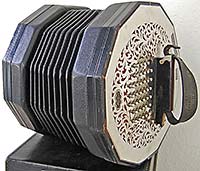
Contents
- A Wheatstone Twelve-Sided ‘Edeophone’ Concertina with Pre-MacCann Chromatic Duet Fingering
- Wheatstone History
- Description of Wheatstone Concertina #35074
- Wheatstone & Co. ‘Edeophones’
- Information from the Concertina Production Ledgers
- The Fingering System of Wheatstone #35074
- Duets in the Wheatstone Patent of 1861
- Motivation for #35074
- Possible Influences After 1938
- Notes
- Authors
-
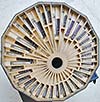
More photographs
of Wheatstone concertina #35074.
The original version of this article appeared in
The Free-Reed Journal, Vol. 3 (2001), pp. 3-17
© 2001 Neil Wayne, Margaret Birley, and Robert Gaskins.
-
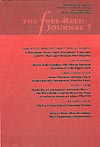
Original publication
of this article in PDF format.
- Other articles
by Neil Wayne - Other articles
by Margaret Birley - Other articles
by Robert Gaskins
Links to related documents
-
 C. Wheatstone & Co.
C. Wheatstone & Co.
- Directory
- Concertina Library directory of all information on this website about C. Wheatstone & Co.
- Posted 01 January 2005
- » go to directory
-
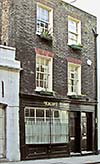 Lachenal & Co.
Lachenal & Co.
- Directory
- Concertina Library directory of all information on this website about Lachenal & Co.
- Posted 01 January 2005
- » go to directory
-
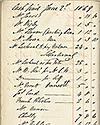 Wheatstone Concertina Ledgers
Wheatstone Concertina Ledgers
- Directory
- Historical business records of C. Wheatstone & Co. from the Horniman Museum in London. Earlier ledgers from the Wayne Archives contain company sales records from the late 1830s to the 1860s along with production records from the 1860s to the 1890s and some early records of wages and other payments. Later ledgers from the Dickinson Archives contain production records from 1910 to 1974. All surviving ledgers have been digitized (some 2,300 pages in total) and made available free on the web for private research. The same material is also available to buy on an inexpensive CD. Includes an introduction to the project by Margaret Birley, Keeper of Musical Instruments at the Horniman Museum, and an article by Robert Gaskins describing in detail how the ledgers were digitized.
- Posted 15 June 2003; Updated 15 June 2005
- » go to directory
-
 Historic Concertina Patents
Historic Concertina Patents
- Directory
- A portfolio of full copies of nine historic concertina patents. Includes the early Wheatstone English patents, Maccann's Duet patent, Jones's Anglo patent, the Crane Duet patent, Kaspar Wicki's patent for the Wicki-Hayden system, and Brian Hayden's much later patent for the same system. Includes: C. Wheatstone 1829; C. Wheatstone 1844; Wm. Wheatstone 1861; Maccann 1884; Jones 1885; Alsepti and Ballinger 1885; Butterfield 1896; Wicki 1896; Hayden 1986. None of these patents has any current force, all have either lapsed or been abandoned.
- Posted 15 December 2004
- » go to directory
-
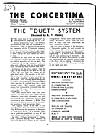 The 'Duet' System, discussed by K. V. Chidley
The 'Duet' System, discussed by K. V. Chidley
- by Kenneth V. Chidley
- Review of the history of the duet concertina leading up to Chidley's own post-war "Chidley System". As published in World Accordion Review 6:3 (December 1950): 31-32. Also a differing version as reprinted with notes by Neil Wayne as K. V. Chidley, "The Duet Concertina--Its History and the Evolution of its Keyboard," Free Reed: The Concertina Newsletter 17 (Jan/Feb 1974): 15-17.
- Posted 15 November 2001
- » read full article in pdf
-
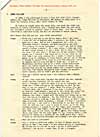 The Tommy Williams Story
The Tommy Williams Story
- by Neil Wayne
- Interview with Tommy Williams, Maccann Duet concertinist and former Lachenal employee. Published in three parts in Free Reed: The Concertina Newsletter, 3 (January 1972): 5–6; 5 (May 1972): 6–7; and 7 (August 1972): 10–12.
- Posted 15 November 2001; last updated 15 January 2004
- » read full document in pdf
-
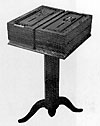 The Wheatstone English Concertina
The Wheatstone English Concertina
- by Neil Wayne
- Survey article covering the Wheatstone English Concertina, the only published source for much of Neil Wayne's path-breaking research. As published in The Galpin Society Journal 44 (1991), 117-149. (The online version does not yet perfectly match the printed version.)
- Posted 01 January 2005
- » go to website
-
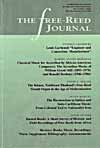 Louis Lachenal: "Engineer and Concertina Manufacturer" (Part 1)
Louis Lachenal: "Engineer and Concertina Manufacturer" (Part 1)
- by Stephen Chambers
- Discussion of the sources of information available about Louis Lachenal, his early career and immigration to England, and his involvement with the design and manufacturing engineering of Wheatstone & Co. concertinas up to the year 1848. As published in The Free-Reed Journal, Vol. 1 (1999), pp. 7-18. There is also a scanned copy of the original publication in PDF format.
- Posted 15 January 2004
- » read full article
- » read full article in pdf
-
 Some Notes on Lachenal Concertina Production and Serial Numbers
Some Notes on Lachenal Concertina Production and Serial Numbers
- by Stephen Chambers
- New evidence for the role played by Louis Lachenal in the early manufacturing history of C. Wheatstone & Co., and some points of reference to use in seeking to date Lachenal concertinas. As published in PICA [Papers of the International Concertina Association], Vol. 1 (2004), pp. 3-23. Better-quality colour photographs from the author's originals have been substituted for those originally published.
- Posted 01 January 2005
- » read full article
- » read full article in pdf
-
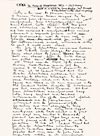 The House of Wheatstone 1750-1950
The House of Wheatstone 1750-1950
- by Henry Minting
- Brief overview of Wheatstone & Co. business history by its last manager, perhaps a draft with a view to use in a catalogue or similar publication. Unpublished manuscript (2 pp.), Horniman Museum Library, Wayne Archives, item no. C1065.
- Posted 15 November 2001
- » read full article in pdf
-
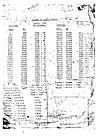 Dates of Concertinas
Dates of Concertinas
- by Henry Minting
- One sheet of blurred manual typing with dim hand-written additions, and another sheet (in two copies) possibly re-typed later from the first on an electric typewriter, with "Dates of Concertinas" relating Wheatstone serial numbers to dates of manufacture. These were discussed and an attempt made to arrive at a reliable partial transcription, in Robert Gaskins, Wheatstone Anglos with Serial Numbers 50,000+, 2001. Unpublished manuscripts, Horniman Museum Library. Neither sheet has yet been catalogued at the Horniman, but these appear to constitute item number C1045 in Neil Wayne's finding list to his archives, which is described as "C1045. A copy of a complete dating list for Wheatstone Concertinas, compiled by Henry Minting. All numbers from 1 - 58485 are covered, with approximate dates of manufacture." ("The Concertina Museum, Archives", page 40.)
- Posted 01 February 2005
- » read full document in pdf
-
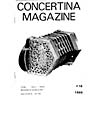 Fingering Systems for Duet Concertina
Fingering Systems for Duet Concertina
- by Brian Hayden
- Overview of all the fingering systems for duet concertina which turned up in Hayden's review of prior art while preparing his own patent application. As published in Concertina Magazine (Australia) 16 (1986): 19-23; 17 (1987): 7-9; 18 (1987): 11-15; 19 (1987): 6-10.
- Posted 15 November 2001
- » read full article in pdf
-
 Horniman Museum
Horniman Museum
- the Horniman Museum
- The Horniman Museum in London is home to the largest collection of concertinas (more than 600 instruments) and much related archival research material. A photographic directory of concertinas in the collection is available on the site. The Wheatstone Concertina Ledgers at the Museum have been digitized and are online at a separate website.
- Posted 15 April 2003
- » go to website
Send this page to a friend.
This page was last changed | |
|
© Copyright 2000– by Robert Gaskins |

